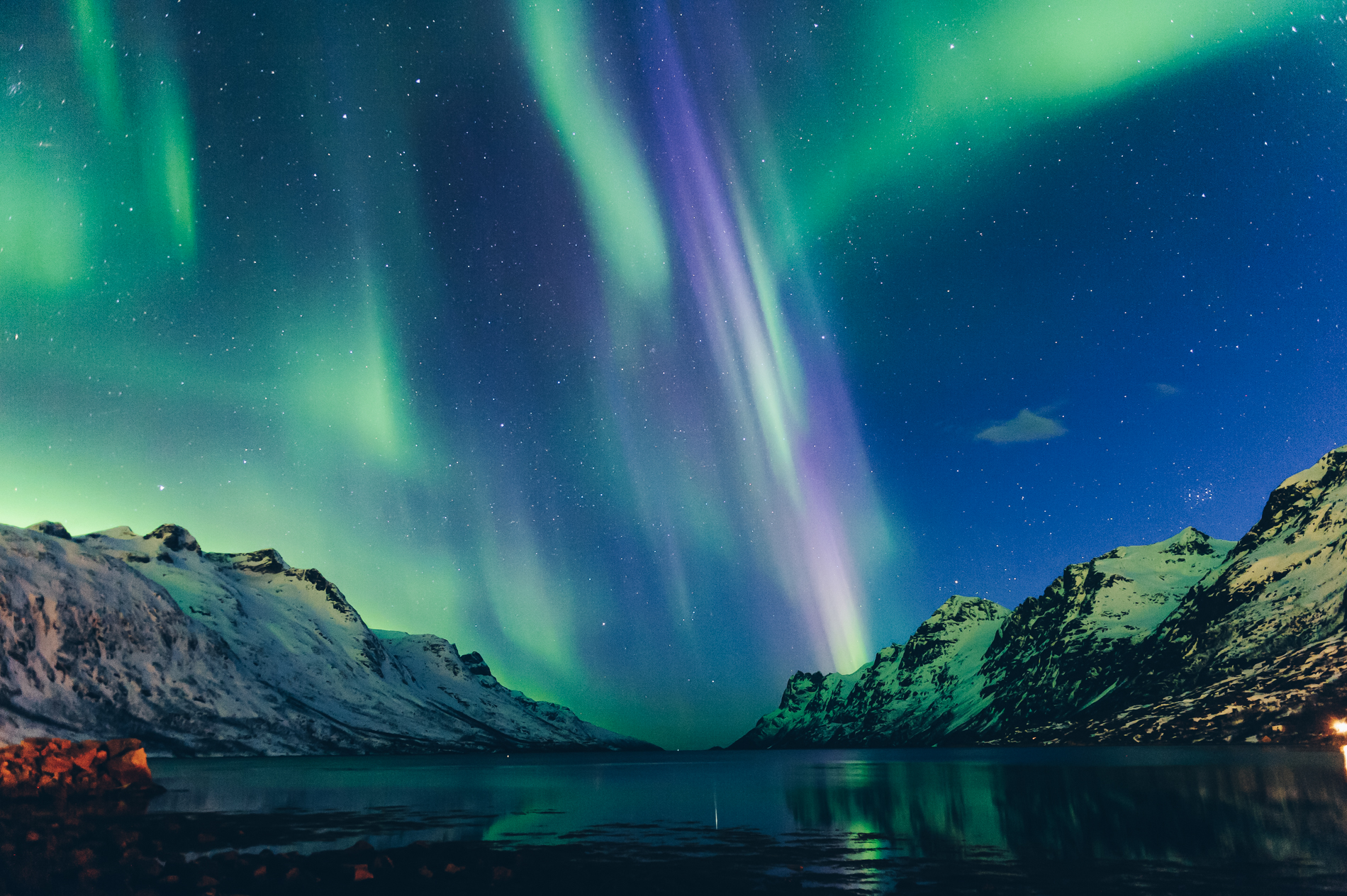The night is cold, the breath tickles the nose and small clouds of vapour from your mouth. The snow crackles under your shoes as hot chocolate warms your hands. You look to the heavens and there it begins. A fragile green veil appears, almost like a shadow. It glows stronger and winds around itself. You hold your breath in awe and remain silent so as to not disturb the light dance in the night sky. It lasts only a few minutes but will be remembered for many years to come. The aurora borealis is truly a wonder of nature.
The first known record of the glowing phenomenon comes from the Babylonians who talked about the northern lights more than 2,500 years ago. But the indigenous peoples of Scandinavia, Alaska, northern Canada and Siberia also have tales about light dances in the sky, which were interpreted as messages from the gods, evil omens or a bridge to the afterlife.
Still, with all our advances in technology, nobody truly knows what causes the northern lights. In a very simplified way, solar winds with charged particles hit our atmosphere. The electrical energy reacts with the magnetic field and atoms at an altitude of about 62 miles and appears as a fluorescent veil—how strong depends on the solar activity. The resulting auroras are visible mainly near the poles.
At the North Pole they are called northern lights or aurora borealis and at the South Pole, southern lights or aurora australis. Green auroras are the most common, but red, pink, purple and blue can also be spotted if you’re lucky. The best time to see the northern lights is from late October to early April. Naturally, it should be as dark as possible with a cloudless sky. Because they are difficult to predict, a northern lights forecast is hard to get. But tools for Northern Lights hunting, which uses the KP index (scale of geomagnetic activity) like specialised apps and the University of Alaska’s Geophysical Institute website, are very useful.

To capture the natural spectacle of the dancing northern lights in a picture, you need a good camera and a stable tripod. Familiarise yourself with the manual settings of your camera to get a sharp photo—the automatic mode won’t suffice. Go for an SLR or system camera with a light-sensitive wide-angle lens. This works best for landscape pictures. You will have to experiment a bit with the exposure time to get enough light for an expressive photo and no distortions from the moving auroras. This is also where the tripod comes in to ensure enough stability. A remote shutter release helps to keep the image from blurring when you trigger the shutter. And then you just have to wait until the first northern lights appear in the night sky—preferably wrapped up thickly with a tasty hot drink in your hand.
Our tip: Look for a suitable place with a dramatic background such as mountains, a lonely hut or a coastline. This way, you’ll end up with a beautifully composed image and not just a green stripe against a dark background.
Ready for a trip? Then pack your cosiest winter clothes, here’s where to see the wonders this winter.
Tromsø, Norway
Located 217 miles north of the Arctic Circle, Tromsø is a northern lights hotspot in Norway. Its accessibility and moderate temperatures thanks to the Gulf Stream are both good arguments in favour of hunting for northern lights here.
Tromsø has more to offer than the aurora borealis. It’s home to the world’s northernmost university and cathedral (Tromsø domkirke) and until 2015 also the northernmost brewery. The Polar Museum provides information about famous polar expeditions, the Polaria Aquarium introduces you to the marine world beyond the Arctic Circle, and the Arctic Cathedral enchants with the largest glass mosaic window in Europe. If you are up for the adventure, you have the difficult choice between whale expeditions, dog sledging and snowshoeing.


Iceland
Iceland is the largest volcanic island in the world and is well connected to mainland Europe and North America. The land of fire and ice lies just below the Arctic Circle and is the most sparsely populated country in Europe—which makes it an excellent destination for Northern Lights. For where there are fewer people, there is less light pollution.

In winter, it’s recommended to stay in the southwest of the island near the capital Reykjavik. From here, within a day trip on the Golden Circle, you can explore the northern lights in Iceland as well as some of the best things to do in Iceland. These include the big geyser and its smaller brother Strokkur, which erupts punctually every 10 minutes. But you’ll also be amazed by the mighty, protected Gullfoss waterfall. The nearby Thingvellir National Park is considered the birthplace of Iceland. Here you’ll also find the Silfra Fissure, where the Eurasian and American tectonic plates drift apart. Perfect spot for an unforgettable dive.

Banff National Park, Alberta, Canada
Ultimately, all of northern Canada, far from the big cities, is suitable for spotting the Northern Lights, but Banff National Park, northwest of Calgary, astounds with its beauty. Little light pollution and especially clear air abound. Lake Minnewanka, Castle Junction and Peyto Lake are popular places to admire the phenomenon in the night sky.

Canada’s first national park is located in the Canadian Rocky Mountains and is a UNESCO World Heritage Site. In winter, you can expect several feet of snow—just perfect for anyone heading to the Banff ski resorts—and horse-drawn sleigh rides. In addition to moose, wolves, and snow goats, you might even encounter some bison that were reintroduced in 2017. Or how about ice skating or ice climbing on frozen waterfalls? If you run out of things to do in Banff—highly unlikely—just explore neighbouring Jasper National Park.


